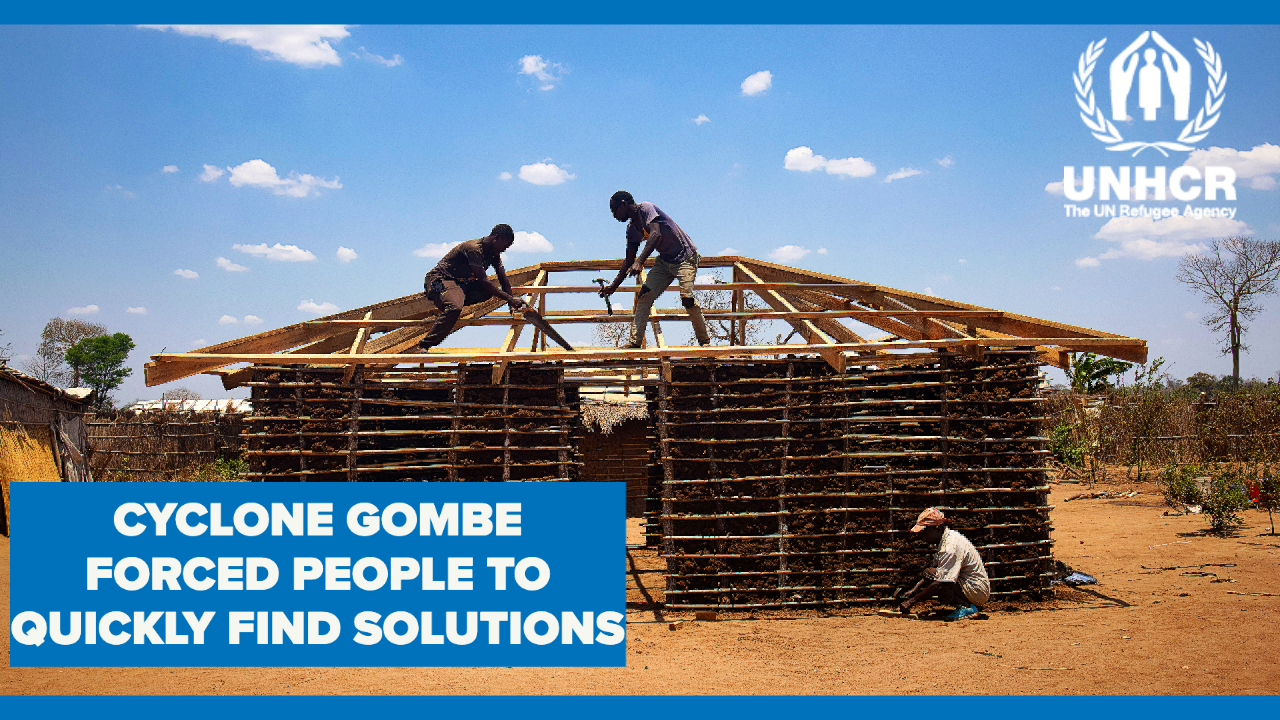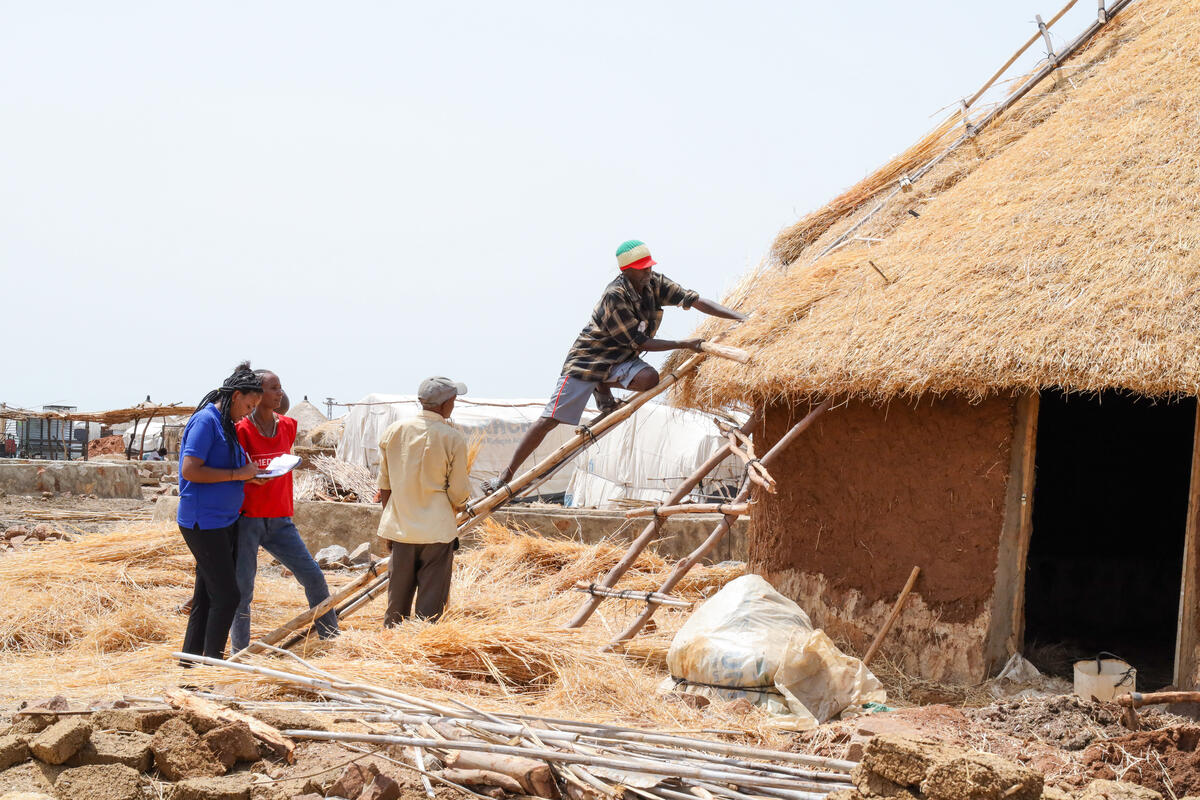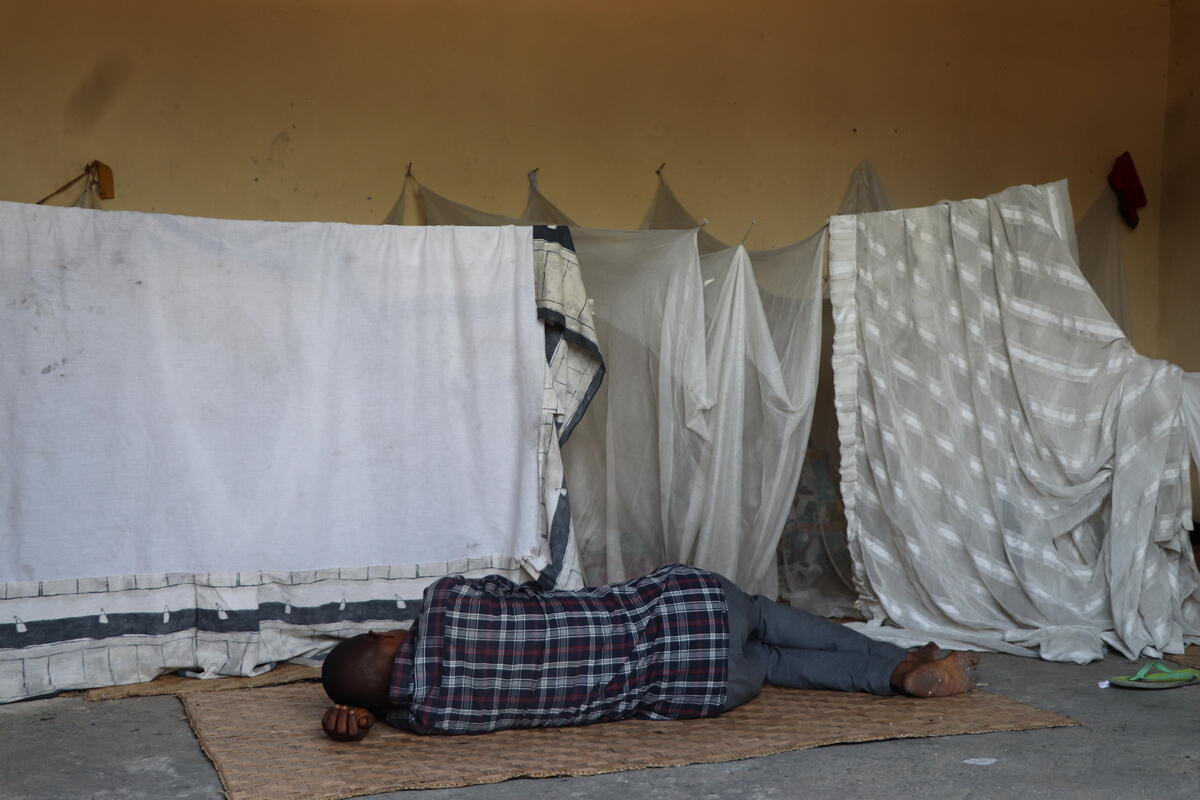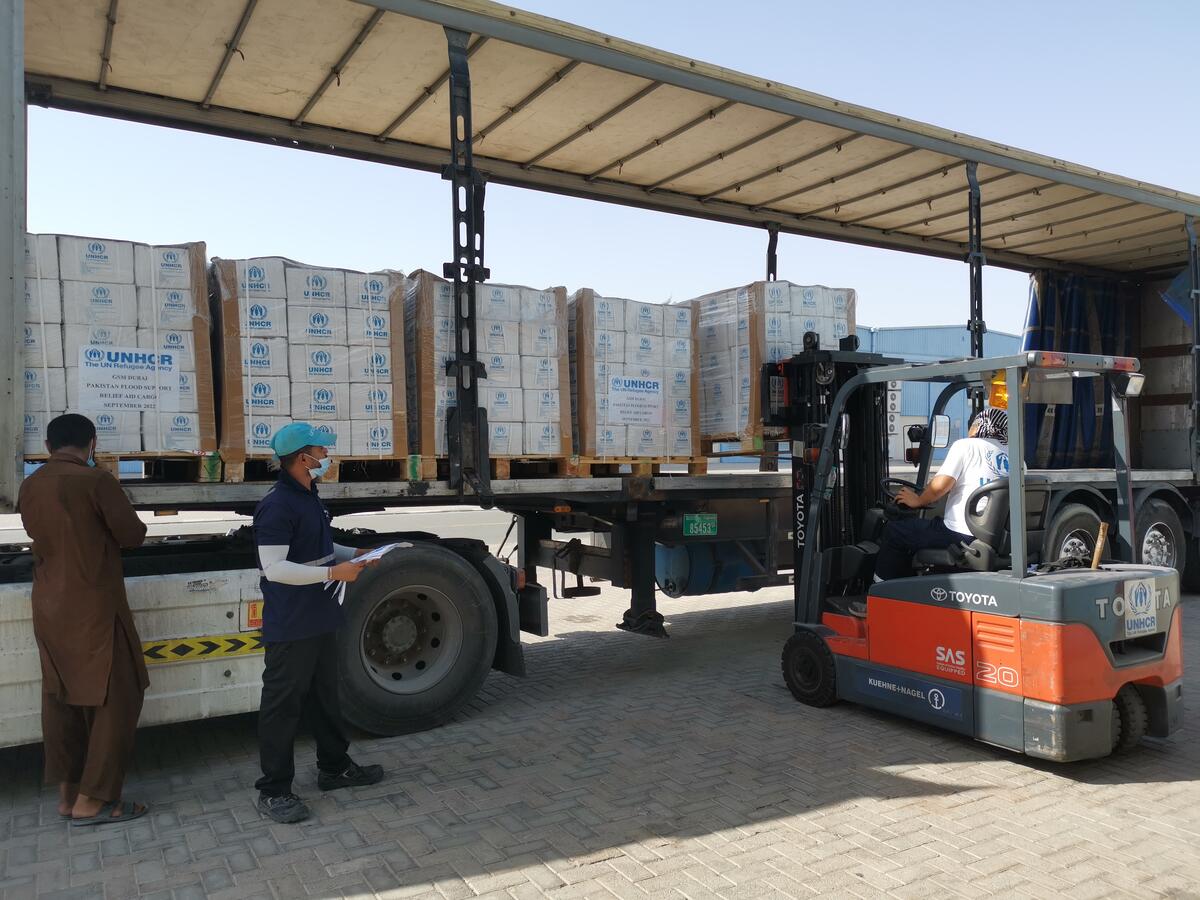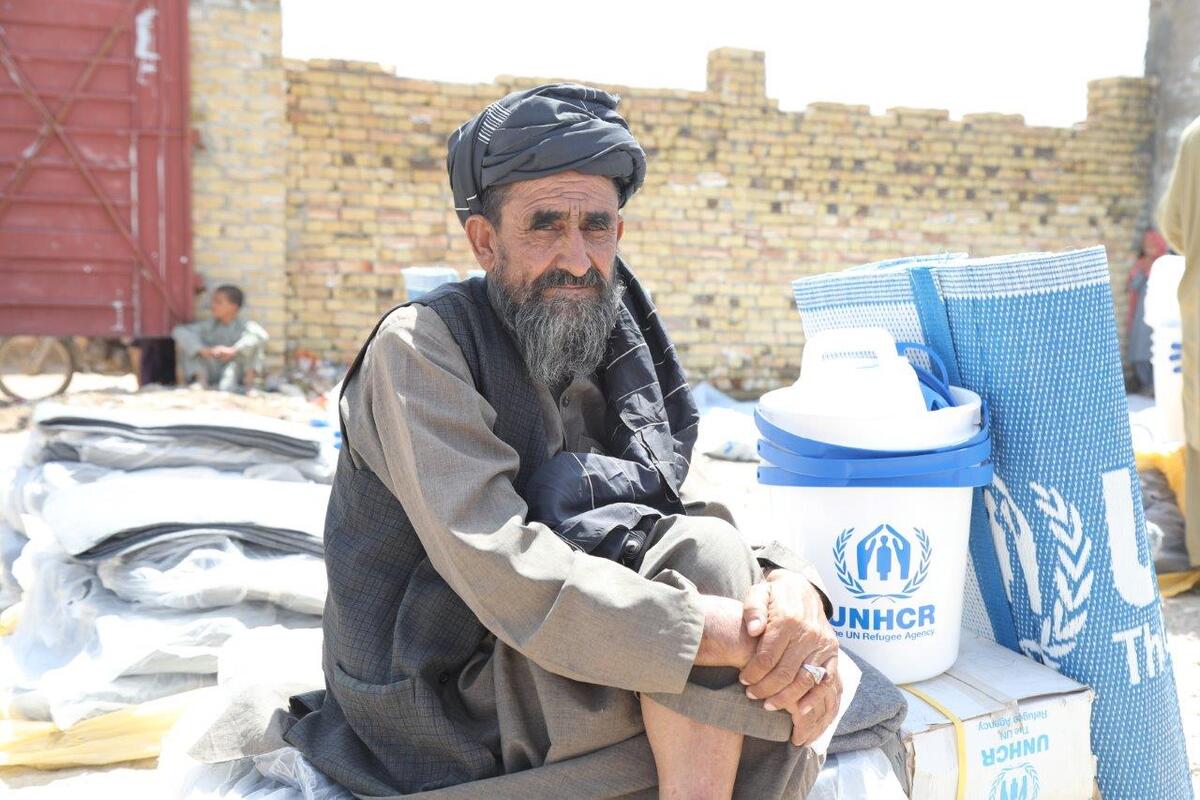New buildings start to replace submerged villages of Nias Island
New buildings start to replace submerged villages of Nias Island

NIAS ISLAND, Indonesia, December 22 (UNHCR) - While still reeling from last December's destructive Indian Ocean tsunami, Nias Island - off Indonesia's Sumatran coast - was struck again three months later by an 8.7 magnitude earthquake that killed almost a thousand people. Thousands more were left injured or homeless, and three remote villages were tilted into the sea.
On the night the earthquake struck, terrified islanders - still traumatized by the December 26 tsunami - grabbed their children and fled for their lives into the hills. But in the isolated fishing villages of Tagaule, Botohaenga, and Bozihona (some 40 km south of the capital Gunung Sitoli on the south-eastern side of the island), villagers had another horror to contend with.
"Water came up from the land like high tide coming in," said Yutimina, who along with her husband and five children was asleep in their home in Bozihona when the earthquake hit. "The water flowed out of cracks that appeared in the earth and flooded the village within an hour," she said.
With one of her children missing, and another one unconscious, Yutimina, her husband and their other children ran from the flooding village, dodging falling trees and thinking they were experiencing the end of the world.
In nearby Tagaule village, Immunuddin Aceh, 70, who was living with his daughter and her family, also suffered a dramatic experience immediately after the earthquake. The only lantern in the house had been broken during the tremor, and he stumbled around in the dark desperately searching for his granddaughter - unaware the rest of the family had already fled to safety. Suddenly, the house started to fill up with water emerging from cracks in the ground. Then, he says the house was struck by a huge wave about eight metres high.
As he was swept away, Immunuddin managed to grab hold of a half-submerged coconut palm. Clinging on to the tree, he worried about the rest of his family and listened to the terrified cries of animals caught in the disaster. He says he cried when he realised a cat, which he had seen in another palm tree, had disappeared. Praying constantly, he clung to the tree for five hours before being rescued.
The powerful geological forces which created the earthquake had tilted the entire island - the south-eastern side of Nias fell by two metres, while the south-western side rose higher above sea level. In some places, the shoreline moved 200 metres inland. As a result, the villages of Tagaule, Botohaenga and Bozihona on the south-eastern side of the island, were half-submerged.
Miraculously, only four lives were lost in the three villages, but hundreds were injured, or left homeless and destitute. Homes as well as health centres, schools, mosques, churches, community centres and fishing boats were lost in the disaster. With most of the villages only accessible on foot or by canoe, delivering humanitarian aid was not easy.
Just days before the earthquake struck Nias, the UN refugee agency had begun withdrawing from its emergency tsunami relief operation in Indonesia's Aceh province, on the island of Sumatra. But UNHCR's logistics office in Medan was still operational, and the agency was able to quickly send tents and relief supplies to Nias.
Nine months later, some residents of the three submerged villages are still living in tented camps. UNHCR recently distributed new tents to replace the older ones, battered and dilapidated by the tropical weather. Villagers in the camps, and others who are living with host families or in partially damaged homes, are restless to get back into proper houses and resume their normal lives. And they won't have to wait much longer.
UNHCR, its partners and the villagers themselves have joined forces in an operation to help the submerged communities rebuild some 300 homes. Work started in late November, after some of the villagers had received special training, and is expected to continue through 2006.
"The villages were chosen in part because of their isolation and marginalization," said Reko Hasegawa, who is in charge of UNHCR's operation in Nias. "There is no doubt that it's going to be a major challenge to see this project through to completion, but the unbelievable toughness and determination of the villagers to move forward with their lives regularly inspires us all, and reminds us that it's a job worth doing."
Getting timber and supplies to these villages is a major logistical exercise: Bozihona is the only one of the three villages that is accessible by road. In addition, there are some tricky land-ownership issues of submerged lands and homes which are in the process of being resolved.
UNHCR is working alongside the Japanese non-governmental organization, the Association of Medical Doctors of Asia (AMDA), and the Indonesian government's co-coordinating body, Badan Rehabilitasi dan Rekonstruksi NAD - Nias (BRR), in the rebuilding project.
In addition to the "submerged-village project," UNHCR plans to buy and import to Nias about 20,000 cubic metres of timber for free distribution to some 13 other agencies working on housing rehabilitation on the island. This will be enough timber to build 3,500-4,000 houses. This partnership of agencies, coordinated by BRR, will work together with the people of Nias, to help them rebuild their homes and their lives.
"Getting legally harvested timber was identified by all agencies involved in Nias as the number-one barrier to moving forward with full scale rehabilitation. So we agreed to take on the challenge," said UNHCR's top official in Medan, Gregory Garras.
"The timber we're buying will come from legitimate suppliers we've identified in Kalimantan. We're sending a five-person inspection team out to the remote sawmills to ensure that we get what we're paying for," Garras added.
The first boatloads of Kalimantan timber are expected to arrive in Nias in late December. The timber is expected to cost more than US$ 4 million - which is around 10 percent of the funds donated to UNHCR for its tsunami relief and recovery work in Aceh province and on Nias. The agency has received a total of US$ 39 million for its tsunami relief operation in Indonesia.
For the submerged villagers living in tents, the signs that large-scale rebuilding is about to get under way are deeply welcome. Samsider Hulu, who was pregnant at the time of the earthquake and living close to the shore with her husband, grandfather and two children, is grateful.
"If UNHCR hadn't come along, it would take a long time for us to get a house - thank you for coming to help us prepare," she said.
By Janine Ward
on Nias Island, Indonesia


